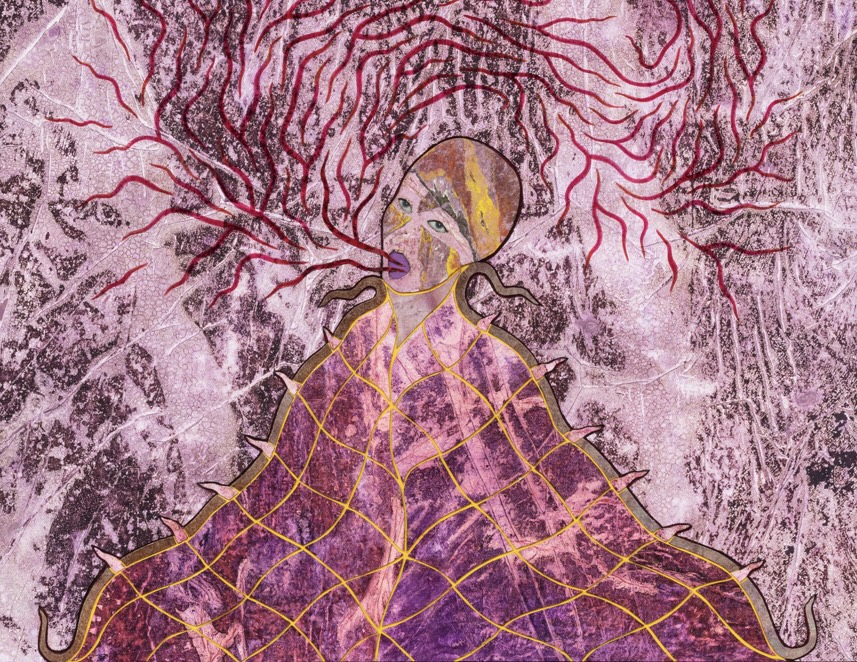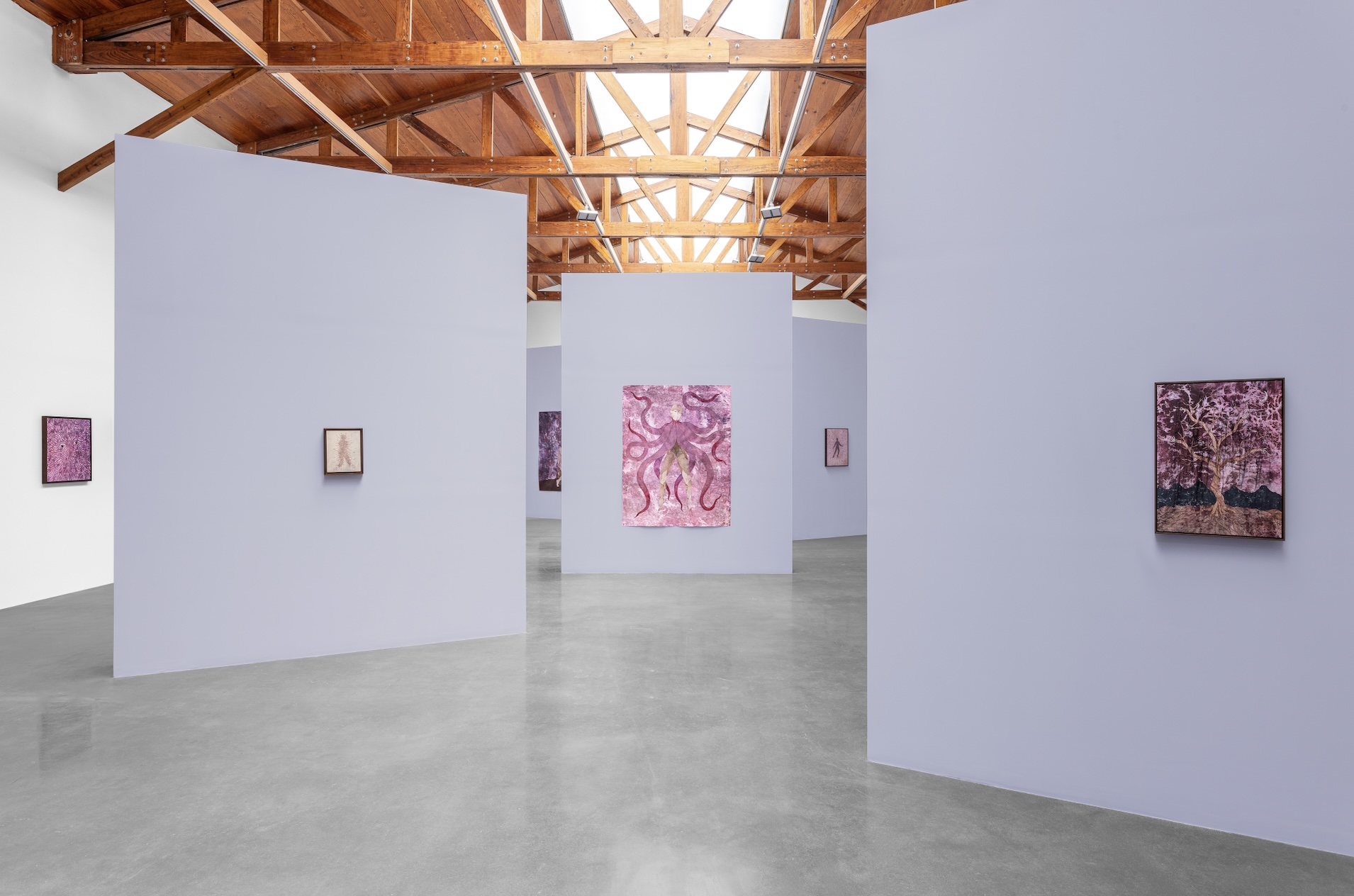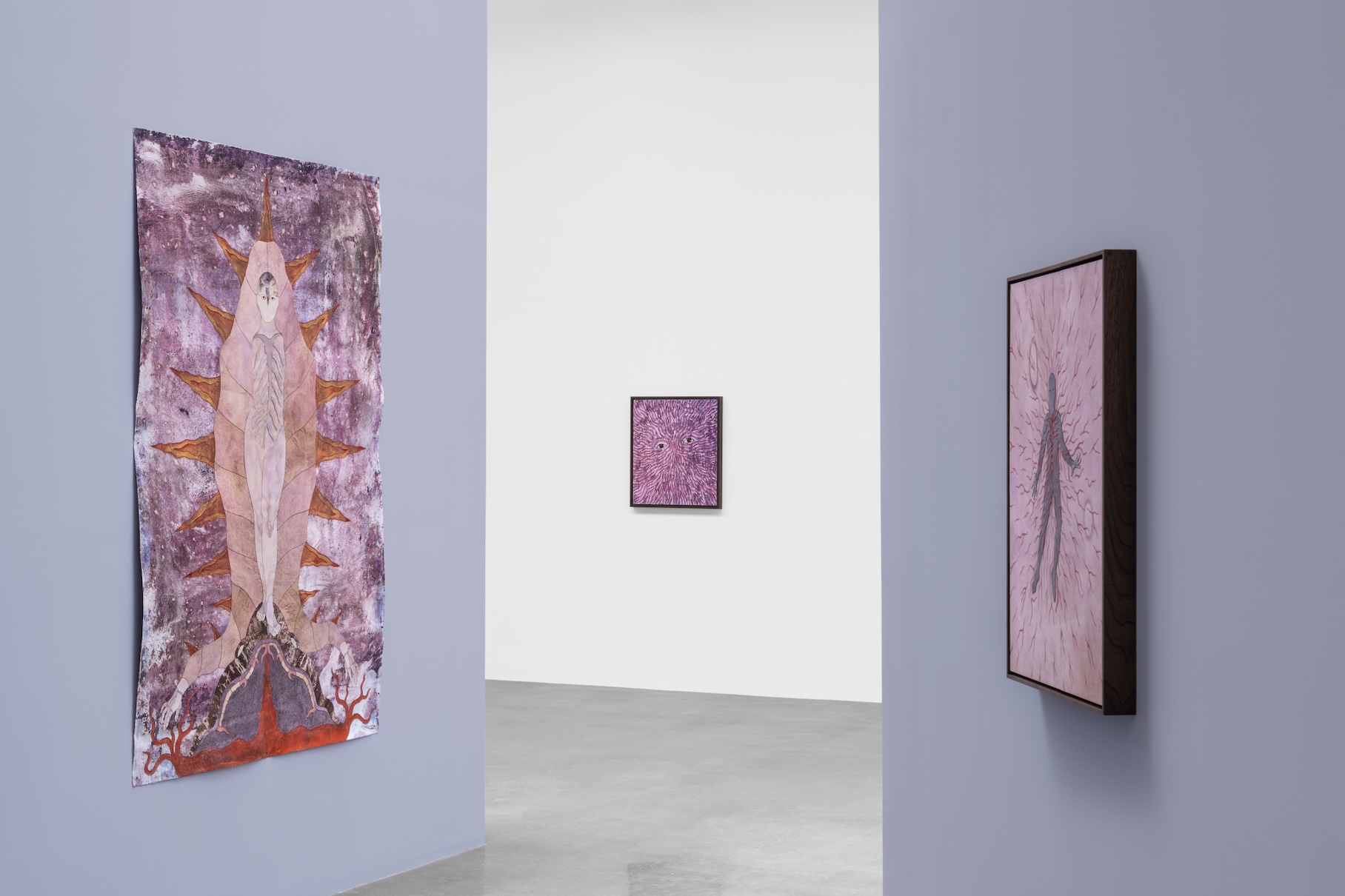
Review
Reclaiming the Yet-to-Come: Felipe Baeza at kurimanzutto
by esteban silva
Reading time
5 min
A series of gazes hold steady in a temporality that resists linear progression. Audre, Octavia, Marsha, James, Ana, Belkis, Sylvia W., Sylvia R., Laura and José are present in Felipe Baeza’s first solo exhibition at kurimanzutto, assembled as a collective prepared to challenge and argue against the present and its predetermined conditions. The show, primarily composed of small- and large-scale collages, features titles that speak to this time-space ambiguity: A form that never settles II, A self that is not quite here but always in process, A través del umbral, among others. In the exhibition text, Isis Yépes describes these figures as entities “with an inherited burden that allows us to keep reclaiming (...) a yet-to-come.” Their gaze is both their strength and the terrain on which they contend.

To navigate the complexity of this struggle, we must first recognize that we are skirting multiple genealogies—intricately interwoven by Baeza with the same meticulousness he brings to his collage work. When I ask him about the power of his Sonder series, specifically the inclusion of prominent figures from social and cultural movements, he describes the series as a space in constant motion:
“It brings together presences that, though no longer physically here, continue to transform the present through their work, thought, and action. These are figures that have deeply shaped my practice and shown me alternative ways of living, creating, and resisting. Rather than a fixed list of names, Sonder is a living conversation that grows with the voices of those who opened paths to imagine other ways of being in the world. This expansion seeks to build bridges between the visible and the hidden, across generations, geographies, and modes of life. For me, it has become a way to activate memory in the present, allowing these presences to accompany us still, showing us how to inhabit the world—even from within their absences.”

Among the artists, thinkers, and activists evoked in the show is José Esteban Muñoz, the Cuban theorist whose thought acts as a central catalyst. From his seminal book Cruising Utopia: The Then and There of Queer Futurity (2009) comes the exhibition’s title, as well as the indeterminate coordinates from which the beings in Baeza’s world move. Their autonomy and desire thrive in that imprecision—far from a “here and now” that may have already been stripped of its generative power. Are we escaping into the misty atmosphere of inked and scraped paper?
The seductive materiality of Baeza’s work echoes what we witness in real time: the global proliferation of a voracious and cynical fascism that never sleeps. From Trumpism dismantling human rights infrastructure in the U.S., to the renegotiation of the 1840 Treaty of Waitangi threatening to undermine Māori rights in New Zealand, to the over 54,000 Palestinians killed by the Israeli state since October 2023—this present could be read as a time of doom. The fear of losing the hard-won gains of the past century’s social movements is ever-present, amplified with each new tragedy. Flight may seem the only viable strategy—yet something else stirs between the lines.
In her curatorial text, Yépes describes Baeza’s entities as “bodies that don’t conform to the frames of the existing world, liberated from form,” calling them “unfinished, fugitive, migrant, belonging nowhere.” This errant condition enables them to cross all manner of borders—but I suspect there are also hidden roots, anchoring them in unseen ways. In a digital interview for kurimanzutto, Baeza explains that he envisions these fragment-beings as “those who rebuild from rupture.” If rupture is the loss we now face in this new fascist wave, then what does rebuilding mean?

As I move through the exhibition’s labyrinthine layout, I return to the Sonder series and find myself again under the watchful gaze of its many figures. The surrounding haze doesn’t diminish the clarity or intensity of their eyes. I begin to grasp their radical capacity to challenge the status quo. Sonderis not mere representation—it’s invocation. “It’s not about copying what was,” Baeza says, “but about activating what still lives within it.”
This magical call reverberates throughout the exhibition, particularly in its iconography: early bodies transition from one state to another, fusing with plant, animal, and mineral life, becoming sites of abundance. Their energy exceeds the visible; their conditions remain undefined. The same holds true for today’s dissidences and resistances—ours, and the many here we inhabit. In a recent Democracy Now! interview on genocide in Gaza and the Trump administration, American activist and thinker Angela Davis affirmed: “What is happening now does not dictate what will happen tomorrow […] I am persuaded that in the end, we are the ones who are going to be able to determine the direction of history.”*

As I take my leave from the pieces, one final question lingers: why the purple walls? Julia Villaseñor, part of the kurimanzutto team, tells me the color was chosen to evoke the moment of transition between night and day, between darkness and light. If this is indeed a moment of rupture and transition, what can we learn from Baeza’s beings in order to move toward abundance rather than scarcity? What might we recover from that then and there to continue reclaiming the yet-to-come?
— esteban silva
Translated to English by Luis Sokol
*“Palestine Is Really the Center of the World”: Angela Davis on Gaza, Black-Jewish Solidarity & Trump in http://youtube.com/watch?v=kOwjB7uTLr0&ab_channel=DemocracyNow%21.
Published on June 22 2025